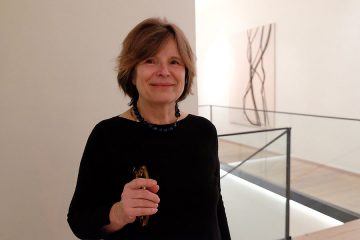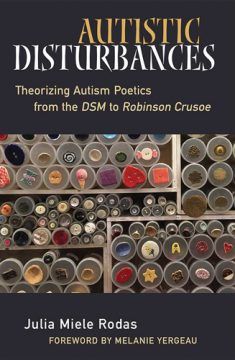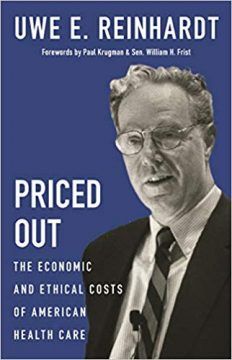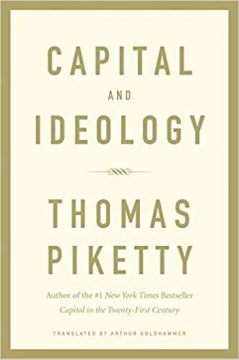 Lenore Palladino in Boston Review, with responses from William Lazonick, Julius Krein, Lauren Jacobs, Michael Lind, Isabelle Ferreras, James Galbraith and Katharina Pistor:
Lenore Palladino in Boston Review, with responses from William Lazonick, Julius Krein, Lauren Jacobs, Michael Lind, Isabelle Ferreras, James Galbraith and Katharina Pistor:
Who owns a corporation, after all? Friedman referred to the shareholders as the owners. According to this way of thinking, a business corporation is nothing but a collection of shares, so whoever owns the shares owns the corporation—and thus should be able to decide how to govern it.
In reality, however—as well as in law—corporations own themselves. Corporations are legal entities that require state government approval. Once incorporated, they have tremendous privileges to operate apart from the people who form them and run them: they have perpetual existence, limited liability, and the ability to take out debt in their own name. Corporations are different from other forms of businesses, such as sole proprietorships or LLCs, where there is no formal legal separation between the founders that profit from and run a business and the business itself. The very purpose of incorporating a business is to create an entity that lives on its own; it exists in perpetuity and is not just an extension of those who provide its capital.
Despite this fundamental separation, the delusion that shareholders are the exclusive owners of business corporations in the United States has persisted, causing most corporations to then govern themselves by the theory of shareholder primacy. But it does not have to be this way. New policies could ensure that all the stakeholders who collectively generate a corporation’s prosperity then benefit from its wealth.
More here.

 Philip Mader, Richard Jolly, Maren Duvendack and Solene Morvant-Roux over at the Institute for Development Studies:
Philip Mader, Richard Jolly, Maren Duvendack and Solene Morvant-Roux over at the Institute for Development Studies: Edit Schlaffer felt as if she was part of history in the making when 60 mothers from this southern region of Germany recently received their MotherSchools diploma from Bavaria’s social minister. Ms. Schlaffer initiated her MotherSchools syllabus nine years ago for women in Tajikistan who were concerned about Islamic extremists recruiting their children. The program has since become a global movement whose goal is to fight extremism not with soldiers, but with mothers. And now, Germany has its first batch of graduates – women with roots from Syria to Algeria. They’ve learned not only how to better detect, and respond to, early signs of radicalization, but also how to better connect with their sons. When Ms. Schlaffer initially met them, the women had tended to be shy, their hands often crossed on their knees and their heads bent down. But on graduation day, donning colorful headscarves and shiny suits, they mingled with top brass politicians in a castle overlooking the Main River here.
Edit Schlaffer felt as if she was part of history in the making when 60 mothers from this southern region of Germany recently received their MotherSchools diploma from Bavaria’s social minister. Ms. Schlaffer initiated her MotherSchools syllabus nine years ago for women in Tajikistan who were concerned about Islamic extremists recruiting their children. The program has since become a global movement whose goal is to fight extremism not with soldiers, but with mothers. And now, Germany has its first batch of graduates – women with roots from Syria to Algeria. They’ve learned not only how to better detect, and respond to, early signs of radicalization, but also how to better connect with their sons. When Ms. Schlaffer initially met them, the women had tended to be shy, their hands often crossed on their knees and their heads bent down. But on graduation day, donning colorful headscarves and shiny suits, they mingled with top brass politicians in a castle overlooking the Main River here. Back in the 1940s, C. S. Lewis remarked on a trend that he saw gaining steam even among some of his better pupils at Oxford: a belief that books penned by the greatest minds of the previous two or three millennia could be grasped only by credentialed professionals. This instinct steered them away from the satisfactions of primary literature and into the swamps of secondary works expounding upon the original sources. “I have found as a tutor in English Literature,” Lewis wrote, “that if the average student wants to find out something about Platonism, the very last thing he thinks of doing is to take a translation of Plato off the library shelf and read the Symposium. He would rather read some dreary modern book ten times as long, all about ‘isms’ and influences and only once in twelve pages telling him what Plato actually said.” Lewis was not denigrating commentaries; he wrote some formidable ones himself. He was merely making the point that most great writers of the distant past wrote to be read and apprehended by curious minds, not merely to provide fodder for exams and dissertations.
Back in the 1940s, C. S. Lewis remarked on a trend that he saw gaining steam even among some of his better pupils at Oxford: a belief that books penned by the greatest minds of the previous two or three millennia could be grasped only by credentialed professionals. This instinct steered them away from the satisfactions of primary literature and into the swamps of secondary works expounding upon the original sources. “I have found as a tutor in English Literature,” Lewis wrote, “that if the average student wants to find out something about Platonism, the very last thing he thinks of doing is to take a translation of Plato off the library shelf and read the Symposium. He would rather read some dreary modern book ten times as long, all about ‘isms’ and influences and only once in twelve pages telling him what Plato actually said.” Lewis was not denigrating commentaries; he wrote some formidable ones himself. He was merely making the point that most great writers of the distant past wrote to be read and apprehended by curious minds, not merely to provide fodder for exams and dissertations. About 10 years ago, I began to get impatient with disability studies. The field was still relatively young, but it seemed devoted almost entirely to analyzing how disability was represented – in art, in culture, in politics, et cetera – especially in the case of physical disability. This, I thought, fell short of the field’s promise for literary studies. Where, I wondered, was the field’s equivalent of Epistemology of the Closet, the book in which Eve Sedgwick showed us how to ‘queer’ texts, such that we will never read a narrative silence or lacuna the same way again? Put another way: I wanted a book that showed how an understanding of disability changes the way we read.
About 10 years ago, I began to get impatient with disability studies. The field was still relatively young, but it seemed devoted almost entirely to analyzing how disability was represented – in art, in culture, in politics, et cetera – especially in the case of physical disability. This, I thought, fell short of the field’s promise for literary studies. Where, I wondered, was the field’s equivalent of Epistemology of the Closet, the book in which Eve Sedgwick showed us how to ‘queer’ texts, such that we will never read a narrative silence or lacuna the same way again? Put another way: I wanted a book that showed how an understanding of disability changes the way we read. Ordinary physical theories tell you what a system is and how it evolves over time. Quantum mechanics does this as well, but it also comes with an entirely new set of rules, governing what happens when systems are observed or measured. Most notably, measurement outcomes cannot be predicted with perfect confidence, even in principle. The best we can do is to calculate the probability of obtaining each possible outcome, according to what’s called the Born rule: The wave function assigns an “amplitude” to each measurement outcome, and the probability of getting that result is equal to the amplitude squared. This feature is what led Albert Einstein to complain about God playing dice with the universe.
Ordinary physical theories tell you what a system is and how it evolves over time. Quantum mechanics does this as well, but it also comes with an entirely new set of rules, governing what happens when systems are observed or measured. Most notably, measurement outcomes cannot be predicted with perfect confidence, even in principle. The best we can do is to calculate the probability of obtaining each possible outcome, according to what’s called the Born rule: The wave function assigns an “amplitude” to each measurement outcome, and the probability of getting that result is equal to the amplitude squared. This feature is what led Albert Einstein to complain about God playing dice with the universe. In the spring of 2009, with the battle over the Affordable Care Act (ACA) in full swing, President Barack Obama called his aides into the oval office for an unusual meeting. As the New York Times
In the spring of 2009, with the battle over the Affordable Care Act (ACA) in full swing, President Barack Obama called his aides into the oval office for an unusual meeting. As the New York Times  I have a practical build. I’m petite, compact. My stomach is tight, small, undemanding. My lungs and my shoulders are strong. I’m not on any prescriptions—not even the pill—and I don’t wear glasses. I cut my hair with clippers, once every three months, and I use almost no makeup. My teeth are healthy, perhaps a bit uneven, but intact, and I have just one old filling, which I believe is located in my lower left canine. My liver function is within the normal range. As is my pancreas. Both my right and left kidneys are in great shape. My abdominal aorta is normal. My bladder works. Hemoglobin 12.7. Leukocytes 4.5. Hematocrit 41.6. Platelets 228. Cholesterol 204. Creatinine 1.0. Bilirubin 4.2. And so on. My IQ—if you put any stock in that kind of thing—is 121; it’s passable. My spatial reasoning is particularly advanced, almost eidetic, though my laterality is lousy. Personality unstable, or not entirely reliable. Age all in your mind. Gender grammatical. I actually buy my books in paperback, so that I can leave them without remorse on the platform, for someone else to find. I don’t collect anything.
I have a practical build. I’m petite, compact. My stomach is tight, small, undemanding. My lungs and my shoulders are strong. I’m not on any prescriptions—not even the pill—and I don’t wear glasses. I cut my hair with clippers, once every three months, and I use almost no makeup. My teeth are healthy, perhaps a bit uneven, but intact, and I have just one old filling, which I believe is located in my lower left canine. My liver function is within the normal range. As is my pancreas. Both my right and left kidneys are in great shape. My abdominal aorta is normal. My bladder works. Hemoglobin 12.7. Leukocytes 4.5. Hematocrit 41.6. Platelets 228. Cholesterol 204. Creatinine 1.0. Bilirubin 4.2. And so on. My IQ—if you put any stock in that kind of thing—is 121; it’s passable. My spatial reasoning is particularly advanced, almost eidetic, though my laterality is lousy. Personality unstable, or not entirely reliable. Age all in your mind. Gender grammatical. I actually buy my books in paperback, so that I can leave them without remorse on the platform, for someone else to find. I don’t collect anything.
 In the aftermath of the dissolution of Pressburger and Powell’s partnership in the late fifties, Pressburger turned to novels. The first, Killing a Mouse on a Sunday, published in 1961, is set during the aftermath of the Spanish Civil War and tells the story of a once notorious bandit, now a tired old man living in exile in France who resolves to cross the border back into Spain, despite the danger to his life, to visit his dying mother. In an interview published in the Daily Mail at the time, Pressburger explained that after years of “communal” creativity in the world of film, he wanted to “prove I could do something on my own.” The novel met with favorable reviews, was quickly translated into a dozen languages, and adapted for the big screen in 1964 as Behold a Pale Horse, directed by Fred Zinnemann and starring Gregory Peck, Omar Sharif, and Anthony Quinn. (That the film itself died a quick death didn’t really matter.) Everything was set for Pressburger’s second novel to build on this success. Unfortunately, this wasn’t to be. The Glass Pearls, published in 1966, was a much darker, grittier tale about a Nazi war criminal hiding in plain sight in the dingy streets of London’s Pimlico. It garnered one lone review, a damning write-up in the Times Literary Supplement. The book barely sold its initial print run of four thousand copies, immediately sinking without a trace. And yet, despite the reception it received at the time, The Glass Pearls is a truly remarkable work. It deserves to be recognized both for its own virtuosity, and as an important addition to the genre of Holocaust literature.
In the aftermath of the dissolution of Pressburger and Powell’s partnership in the late fifties, Pressburger turned to novels. The first, Killing a Mouse on a Sunday, published in 1961, is set during the aftermath of the Spanish Civil War and tells the story of a once notorious bandit, now a tired old man living in exile in France who resolves to cross the border back into Spain, despite the danger to his life, to visit his dying mother. In an interview published in the Daily Mail at the time, Pressburger explained that after years of “communal” creativity in the world of film, he wanted to “prove I could do something on my own.” The novel met with favorable reviews, was quickly translated into a dozen languages, and adapted for the big screen in 1964 as Behold a Pale Horse, directed by Fred Zinnemann and starring Gregory Peck, Omar Sharif, and Anthony Quinn. (That the film itself died a quick death didn’t really matter.) Everything was set for Pressburger’s second novel to build on this success. Unfortunately, this wasn’t to be. The Glass Pearls, published in 1966, was a much darker, grittier tale about a Nazi war criminal hiding in plain sight in the dingy streets of London’s Pimlico. It garnered one lone review, a damning write-up in the Times Literary Supplement. The book barely sold its initial print run of four thousand copies, immediately sinking without a trace. And yet, despite the reception it received at the time, The Glass Pearls is a truly remarkable work. It deserves to be recognized both for its own virtuosity, and as an important addition to the genre of Holocaust literature. In August, marine biologists Johnny Gaskell and Peter Mumby and a team of researchers boarded a boat headed into unknown waters off the coasts of Australia. For 14 long hours, they ploughed over 200 nautical miles, a Google Maps cache as their only guide. Just before dawn, they arrived at their destination of a previously uncharted blue hole—a cavernous opening descending through the seafloor. After the rough night, Mumby was rewarded with something he hadn’t seen in his 30-year career. The reef surrounding the blue hole had nearly 100 percent healthy coral cover. Such a find is rare in the Great Barrier Reef, where coral bleaching events in 2016 and 2017 led to headlines
In August, marine biologists Johnny Gaskell and Peter Mumby and a team of researchers boarded a boat headed into unknown waters off the coasts of Australia. For 14 long hours, they ploughed over 200 nautical miles, a Google Maps cache as their only guide. Just before dawn, they arrived at their destination of a previously uncharted blue hole—a cavernous opening descending through the seafloor. After the rough night, Mumby was rewarded with something he hadn’t seen in his 30-year career. The reef surrounding the blue hole had nearly 100 percent healthy coral cover. Such a find is rare in the Great Barrier Reef, where coral bleaching events in 2016 and 2017 led to headlines  The car, wrote the French thinker André Gorz, “supports in everyone the illusion that each individual can seek his or her own benefit at the expense of everyone else”.
The car, wrote the French thinker André Gorz, “supports in everyone the illusion that each individual can seek his or her own benefit at the expense of everyone else”.  Thomas Piketty’s new book
Thomas Piketty’s new book  Some sporting moments achieve mythical status because of their sheer audacity. Muhammad Ali’s
Some sporting moments achieve mythical status because of their sheer audacity. Muhammad Ali’s As it is becoming obvious that political responses to global warming such as the Paris treaty are not working, environmentalists are urging us to consider the climate impact of our personal actions. Don’t eat meat, don’t drive a gasoline-powered car and don’t fly, they say. But these individual actions won’t make a substantial difference to our planet, and such demands divert attention away from the solutions that are needed.
As it is becoming obvious that political responses to global warming such as the Paris treaty are not working, environmentalists are urging us to consider the climate impact of our personal actions. Don’t eat meat, don’t drive a gasoline-powered car and don’t fly, they say. But these individual actions won’t make a substantial difference to our planet, and such demands divert attention away from the solutions that are needed.